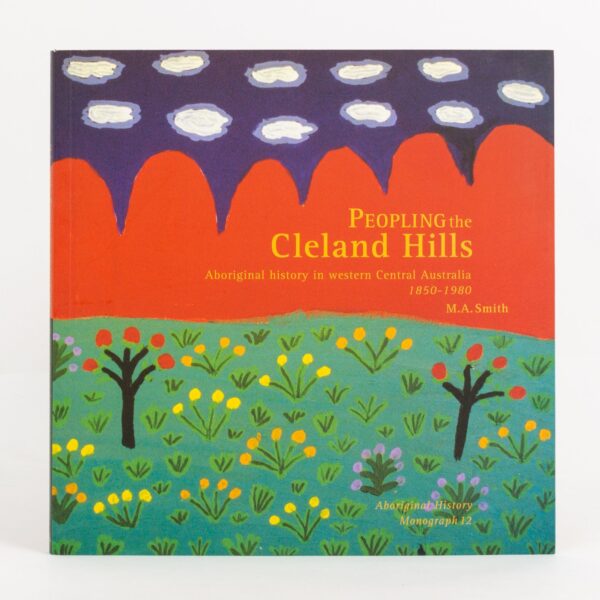
London, Macmillan and Co., Limited, 1902 (second edition)/ [1884]. Small quarto, x, 178 pages plus 9 charts. Fawn cloth printed and decorated in red; head of the spine slightly bumped; red ribbon ties attached near the leading edge of the covers a little creased; endpapers unevenly tanned; a near-fine copy with the dustwrapper a little stained, torn and chipped with minor loss. The rear endpocket is empty (presumably as issued), and no data have been recorded in this copy. The preface is very informative, and warrants being repeated in full here: 'The first appearance of "Life History Album" many years ago was due to the enthusiasm of the late Dr Mahomed, then a medical man of much promise, and apparently on the point of rising to considerable eminence in his profession. He had firmly persuaded himself that some such work would be favoured and promoted by medical men throughout the country if it were composed under the eyes of physicians growing into repute in the medical world, and if it were afterwards strongly recommended, as it probably would be, by the Collective Investigation Committee of the Medical Association, of which he was an active member. He made it a further condition that my name should appear as its editor, I being known at that time to be much occupied in such matters. To this I agreed with some reluctance, for I wished to bear the entire responsibility or none at all. So a small committee of medical men was formed who met frequently at my house, where the book was mostly composed. But the result did not at all satisfy myself, neither do I think that it satisfied the others. It was too bulky and ill arranged. In fact it was emphatically a case of too many cooks. Each had his own views, and I believe that any one of us acting alone would have produced a better balanced book than we did working together. Soon after it was in print Dr Mahomed contracted typhoid fever, the very subject of his own special studies, and he died, to the great regret of myself and many others. The tributes of affection to his memory from his colleagues at Guy's Hospital were remarkable for their warmth and high appreciation of his ability. He being gone, none of the remaining medical members of the committee concerned themselves much further with the work, and the main part of Dr Mahomed's scheme was never fulfilled. However, the book had a small circulation, until of late years it fell out of print. Being frequently urged by friends whose opinion I trust, to largely re-arrange and re-write it, I have at length done so - with what success those who may use it will judge'.

London, Macmillan and Co., Limited, 1902 (second edition)/ [1884]. Small quarto, x, 178 pages plus 9 charts. Fawn cloth printed and decorated in red; head of the spine slightly bumped and marked, with a few marks near the top edge of the front cover; red ribbon ties attached near the leading edge of the covers a little creased; endpapers unevenly tanned; an excellent copy. The rear endpocket is empty (presumably as issued), and no data have been recorded in this copy. The preface is very informative, and warrants being repeated in full here: 'The first appearance of "Life History Album" many years ago was due to the enthusiasm of the late Dr Mahomed, then a medical man of much promise, and apparently on the point of rising to considerable eminence in his profession. He had firmly persuaded himself that some such work would be favoured and promoted by medical men throughout the country if it were composed under the eyes of physicians growing into repute in the medical world, and if it were afterwards strongly recommended, as it probably would be, by the Collective Investigation Committee of the Medical Association, of which he was an active member. He made it a further condition that my name should appear as its editor, I being known at that time to be much occupied in such matters. To this I agreed with some reluctance, for I wished to bear the entire responsibility or none at all. So a small committee of medical men was formed who met frequently at my house, where the book was mostly composed. But the result did not at all satisfy myself, neither do I think that it satisfied the others. It was too bulky and ill arranged. In fact it was emphatically a case of too many cooks. Each had his own views, and I believe that any one of us acting alone would have produced a better balanced book than we did working together. Soon after it was in print Dr Mahomed contracted typhoid fever, the very subject of his own special studies, and he died, to the great regret of myself and many others. The tributes of affection to his memory from his colleagues at Guy's Hospital were remarkable for their warmth and high appreciation of his ability. He being gone, none of the remaining medical members of the committee concerned themselves much further with the work, and the main part of Dr Mahomed's scheme was never fulfilled. However, the book had a small circulation, until of late years it fell out of print. Being frequently urged by friends whose opinion I trust, to largely re-arrange and re-write it, I have at length done so - with what success those who may use it will judge'.
